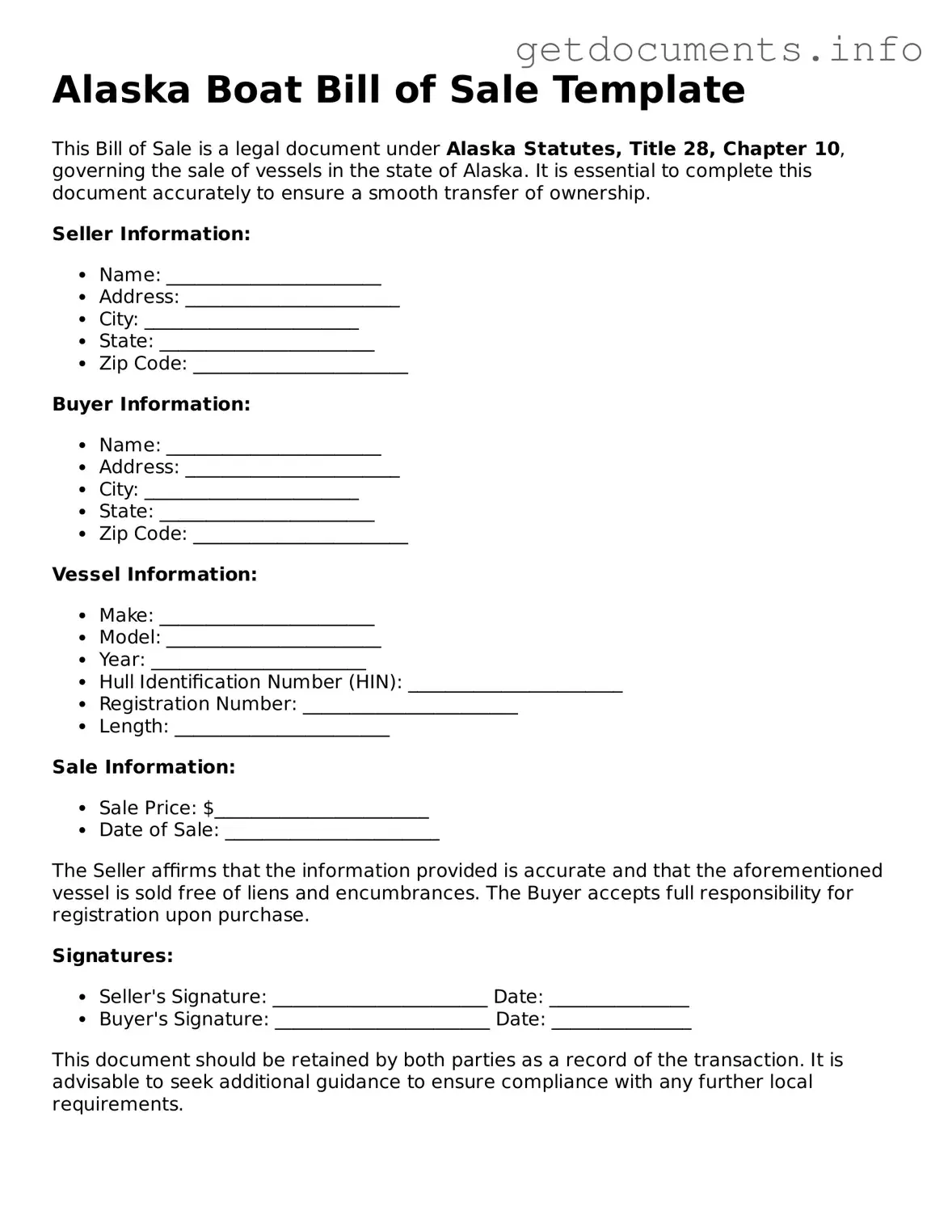When buying or selling a boat in Alaska, having the right documentation is crucial to ensure a smooth transaction. One of the key documents involved in this process is the Alaska Boat Bill of Sale form. This form serves as a legal record of the sale, detailing essential information such as the names and addresses of both the buyer and seller, a description of the boat—including its make, model, and hull identification number—and the sale price. Additionally, it may include the date of the transaction and any relevant terms or conditions agreed upon by both parties. By completing this form, both the buyer and seller can protect their interests and establish clear ownership transfer. It’s important to note that while the bill of sale is not always required for registration, it can be beneficial for future reference and proof of ownership. Understanding the significance of this document can help ensure that your boating experience in Alaska starts off on the right foot.
